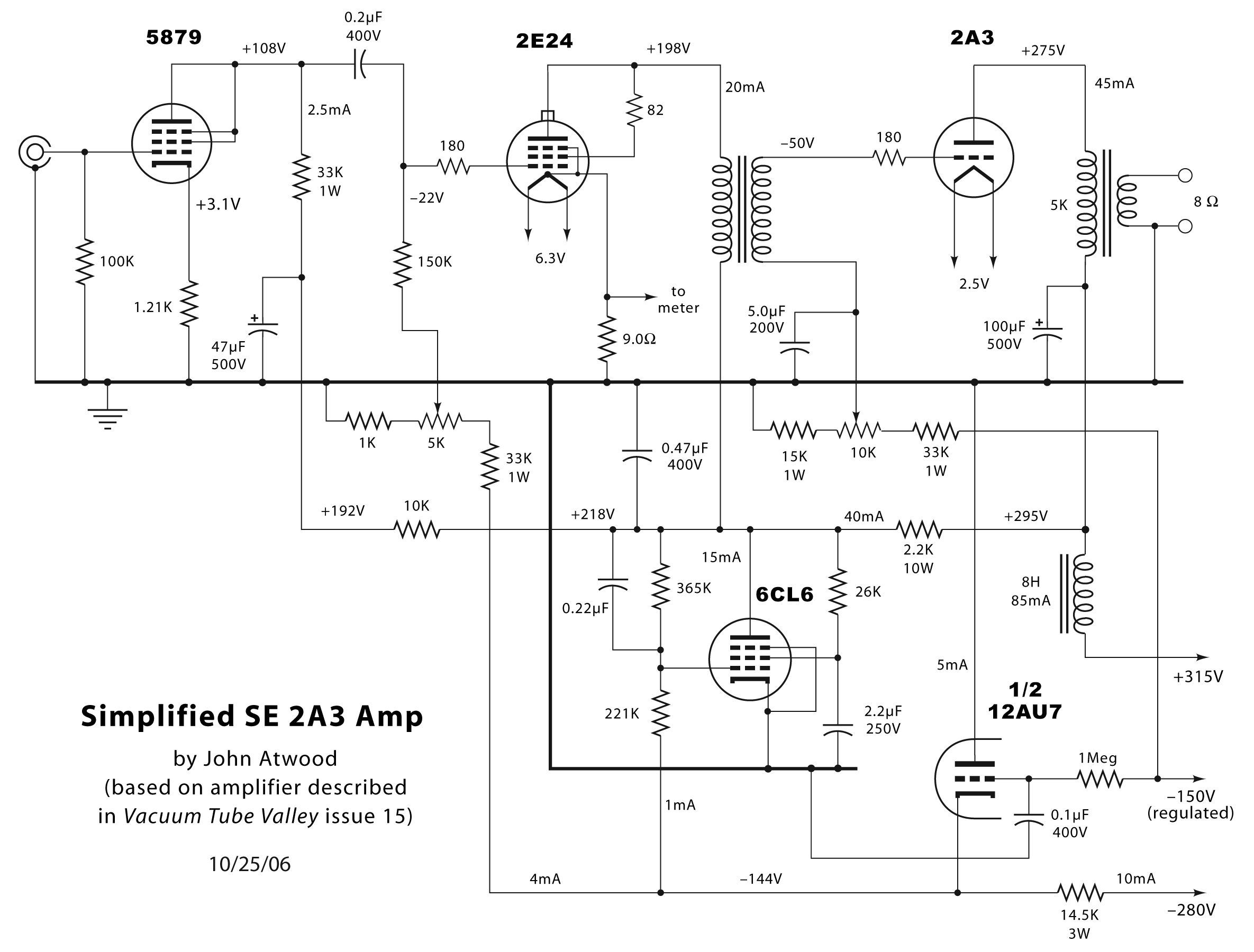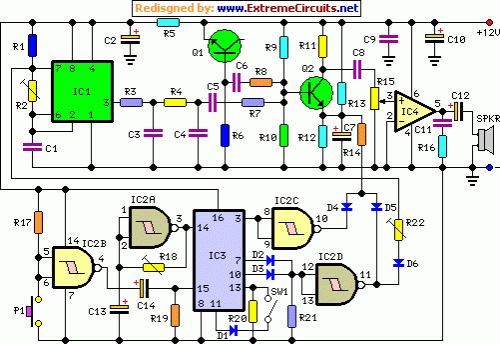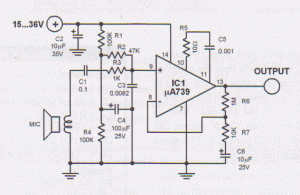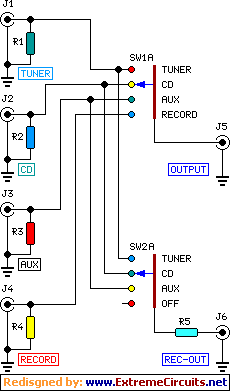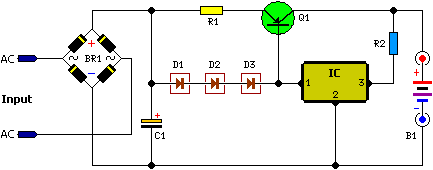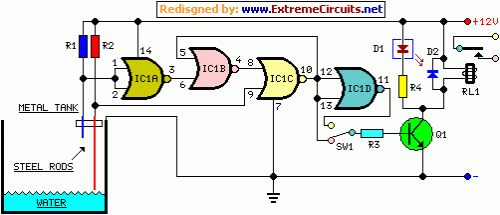
6DJ8 / ECC88 / Symmetrical SRPP Tube Preamplifier Schematic
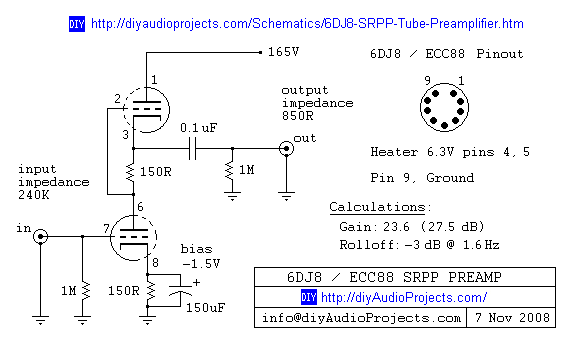
6DJ8 / ECC88 Symmetrical SRPP Tube Preamplifier Schematic. The gain of the preamp is 27 dB (approximately 23.5 times).
The 6DJ8 / ECC88 symmetrical SRPP (Shunt Regulated Push-Pull) tube preamplifier schematic is designed to provide a high level of gain while maintaining low distortion and excellent linearity. The circuit utilizes two triode sections of the 6DJ8/ECC88 tube, configured in a symmetrical arrangement to enhance performance characteristics.
In this design, the first stage of the amplifier is responsible for signal amplification, while the second stage serves to buffer the output, ensuring that the load does not affect the gain of the previous stage. The gain of 27 dB indicates that the output signal is 23.5 times greater than the input, making this preamplifier well-suited for driving subsequent stages in audio applications.
The SRPP configuration is particularly advantageous because it allows for a high output impedance while maintaining a low input impedance. This is beneficial for interfacing with various audio sources and subsequent amplification stages, as it provides better signal integrity and minimizes loading effects. The use of high-quality passive components, such as resistors and capacitors, is critical in preserving the audio signal's fidelity.
Power supply considerations are essential for the proper functioning of this preamplifier. A regulated power supply is recommended to provide stable voltage levels to the tube filaments and plate circuits, ensuring consistent performance. Additionally, bypass capacitors may be employed to filter out unwanted noise and ripple from the power supply, further enhancing the overall sound quality.
Overall, the 6DJ8 / ECC88 symmetrical SRPP tube preamplifier schematic is an excellent choice for audiophiles seeking to achieve high-quality sound reproduction with the distinctive warmth and character associated with vacuum tube amplification.6DJ8 / ECC88 Symmetrical SRPP Tube Preamplifier Schematic. Gain of the preamp is 27 dB (about 23.5 times). 🔗 External reference
The 6DJ8 / ECC88 symmetrical SRPP (Shunt Regulated Push-Pull) tube preamplifier schematic is designed to provide a high level of gain while maintaining low distortion and excellent linearity. The circuit utilizes two triode sections of the 6DJ8/ECC88 tube, configured in a symmetrical arrangement to enhance performance characteristics.
In this design, the first stage of the amplifier is responsible for signal amplification, while the second stage serves to buffer the output, ensuring that the load does not affect the gain of the previous stage. The gain of 27 dB indicates that the output signal is 23.5 times greater than the input, making this preamplifier well-suited for driving subsequent stages in audio applications.
The SRPP configuration is particularly advantageous because it allows for a high output impedance while maintaining a low input impedance. This is beneficial for interfacing with various audio sources and subsequent amplification stages, as it provides better signal integrity and minimizes loading effects. The use of high-quality passive components, such as resistors and capacitors, is critical in preserving the audio signal's fidelity.
Power supply considerations are essential for the proper functioning of this preamplifier. A regulated power supply is recommended to provide stable voltage levels to the tube filaments and plate circuits, ensuring consistent performance. Additionally, bypass capacitors may be employed to filter out unwanted noise and ripple from the power supply, further enhancing the overall sound quality.
Overall, the 6DJ8 / ECC88 symmetrical SRPP tube preamplifier schematic is an excellent choice for audiophiles seeking to achieve high-quality sound reproduction with the distinctive warmth and character associated with vacuum tube amplification.6DJ8 / ECC88 Symmetrical SRPP Tube Preamplifier Schematic. Gain of the preamp is 27 dB (about 23.5 times). 🔗 External reference
